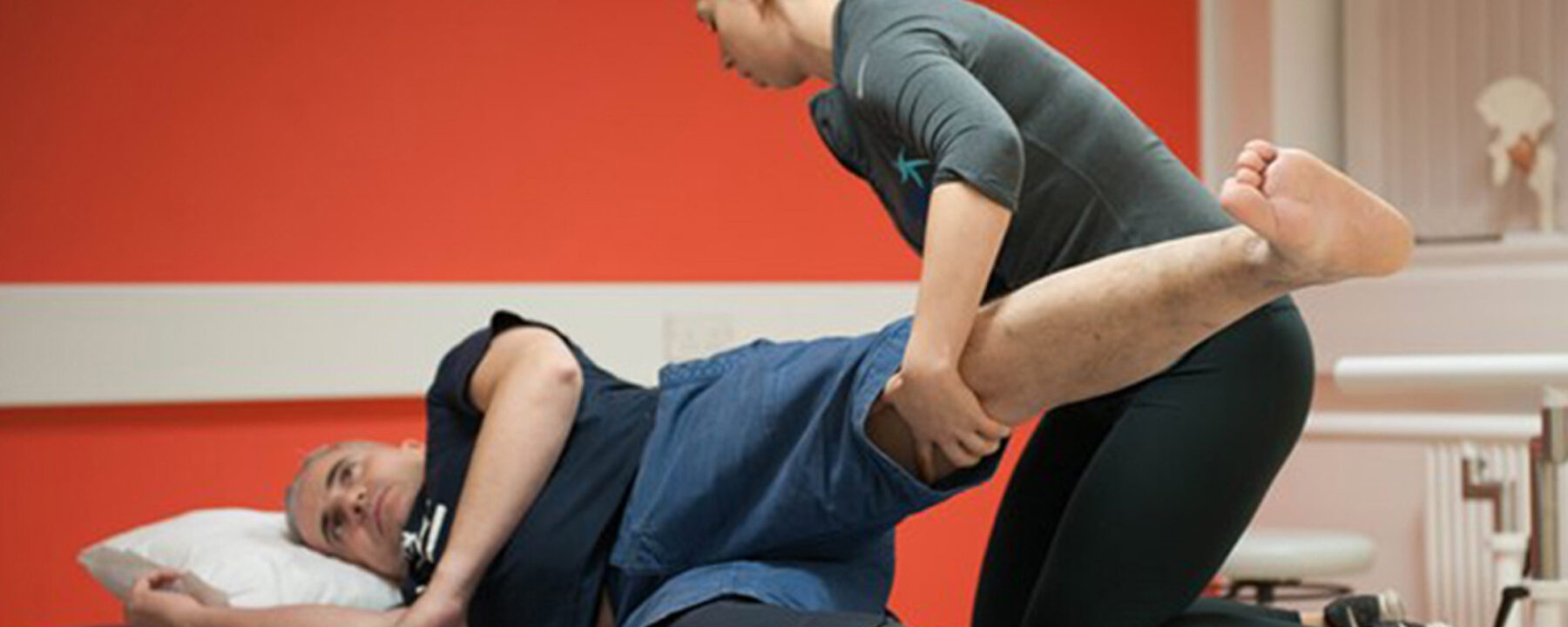
Physio Facts - The Hips
The Hips
The hip is one of the biggest weight bearing joints in the body, so naturally is prone to wear and tear so regardless of the level of your amputation, taking care of your hips is very important. The hip is a ball and socket joint which allows for big ranges of movement in several different directions. It is held together by ligaments and muscles and a clever ring of cartilage inside the joint that acts as suction to reduce the risk of dislocation.
Sometimes, tissues that are normally stretchy become stiff and fibrous. When tendons and ligaments surrounding the joints in the body shorten, a joint contracture can develop that can reduce the movement of the joint. This is a common problem in people who sit down for long periods of time as they experience shortening in the hip flexor muscles (a muscle group at the front of the hip/thigh). This can make it very difficult to push your thigh back so it is straight underneath you and causes you to feel a pull at the front of your hip. This often makes it tricky to stand up straight because subsequently your pelvis tilts forwards, creating an inward curve in your lower back. Over time this could cause pain in the lower back due to muscle imbalances and misalignment.
In the clinic we use the ‘Thomas Test’ to assess how tight your hip flexor muscles are. This involves sitting on the edge of a physio plinth, hugging one knee in to your chest and lying back – if your hip flexors are tight, the relaxed leg or stump will lift off the plinth. We take a measurement of the angle and the prosthetists will then use the same angle to accommodate any hip flexion in the socket of your prosthetic limb.
Although the hip flexion can be accommodated in your prosthetic socket, the bigger the angle the more impact it can have on your walking. The ‘normal’ walking pattern requires one foot to stretch back underneath you so you can push off your toes to lift the leg forwards. If your hip flexors are tight, you may find it more difficult to swing the leg through in front of you.
An easy way of stretching your hip flexors is to lie on your front and push both of your hip bones in to the mat. To increase the stretch, place a towel or pillow underneath your knee or the bottom of your stump. Hold the stretch for 15-30 seconds and repeat three times. If your hips are too tight and you are unable to lie flat on your front, you can lie on your side and use a towel or belt to gently pull the thigh back so it is in line with your shoulder. Watch out for your back curving – this is a compensatory movement that will take the hip flexors off a stretch, so try and keep your spine straight. Some manual therapy from a physiotherapist can help to begin the stretching process if you’re struggling. This may include massage, trigger point release, electrotherapy and passive stretching – where we stretch the muscles for you with slight overpressure.
The muscles paired with the hip flexors are the gluteus maximus and hamstrings at the back of the hip and down the back of the leg. In a muscle pair, when one contracts the other relaxes. So, you guessed it! You need to begin strengthening the glutes and hamstrings once the mobility is better in the hip flexors. A good exercise to strengthen these muscles is to lay on your back, bend your knees so your feet are on the floor and push through the heels to create a ‘bridge’. You can also do this on a single foot, just make sure your pelvis doesn’t dip to one side by squeezing your core. Repeat this 10 times and as you get stronger, try and hold it at the top for 5 seconds.
A good way to measure if your hip flexor length is improving is to repeat the Thomas Test – the smaller the gap between your stump or leg and the bed, the better! The aim is for your stump or leg to remain flat on the bed, so persevere.
Please email Emily with any questions you may have - emilyb@dorset-ortho.com
